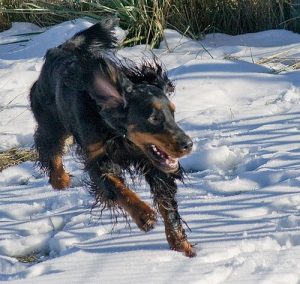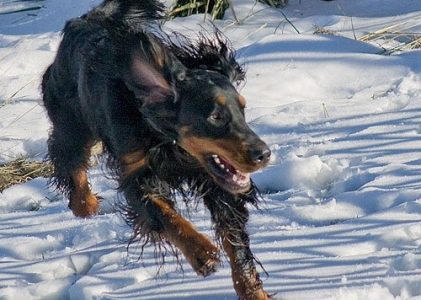I was standing at a Nose Work trial in the heart of Denver, outside of South High School when I heard someone yell out “Loose Dog!” My many years in the dog industry, attending dog shows, working at doggie daycares and grooming salons, caused me to jump into action, ready to help. I’ve caught many strange dogs in my life, including a rambunctious Shepherd at a Search and Rescue practice who came barreling into me at full speed, and instead of backing away to protect my own body as many others did, I let her run full force into my open legs, closing them quickly around her body and bringing an end to her interruption of the training day. On more than one occasion, I have raced out the door of a dog business where a dog escaped their owner in the parking lot. When I lived on a corner lot in a busy neighborhood, I caught many a stray dog who came up to investigate my dogs through the fence. On this day, when I turned to see the loose dog at the Nose Work trial, I had that sinking feeling that I’ve had too many times in my life with dogs, “Oh s***! My dog is loose!”

I’ll admit that Fawkes, my 5-year-old Rhodesian Ridgeback, looked beautiful galloping across the front lawn of South High School. I immediately cursed myself for not spending more time working on his emergency recall. As an intact male of an independently minded hound breed, he requires an immense amount of work to build his desire to come when called, especially when the stakes are high. Like the cobbler’s kid growing up without shoes, Fawkes the dog trainer’s kid has received an inadequate amount of training in coming when called. I generally manage this by keeping him on leash or on a long-line at all times, but there’s this pesky little saying that management always fails…
While I could write an entire blog on recall problems, and the training solutions for such problems, this one is about what you should do if that training hasn’t been established (or it’s a dog you don’t know), or if the training you have done is presently failing. As with many things in dog training, as with life, the answer is “It Depends”. Your reaction will change based on the environment around you, what you know about the dog, how many people you can mobilize, and what you have at your disposal (food, toys, leash, etc.).
Based on my experience in catching loose dogs, here is my best advice:
- Do not chase the dog! This can have many effects, none of them desirable. If the dog is scared, you are just adding to the scary experience. If the dog is having a great time being loose, they may interpret your running after them as joining in on the fun. Some loose dogs will stay within a certain distance of their owner, and running after them will only expand their range.
- If you have a bag of treats, it’s worth a try to shake them to get the dog’s attention. Not all dogs will buy this, or even care, but enough dogs will react to it that you should give it a shot.
- Run away from the dog. This will incite the chase reaction, and you can get the dog moving toward you. If the dog starts chasing you, run to the safest location you possibly can.
- Do not reach for the dog! If you manage to get the dog coming toward you, avoid the temptation to try to grab the dog. A scared dog will only become more scared, and a clever dog enjoying a jaunt will only work harder to avoid being caught.
- Fall down. Yep, that’s right, fall to the ground – the more dramatic the better! This is how I caught Fawkes at the Nose Work trial. It does two things – it creates some concern in the dog, especially if it’s your own dog. Humans matter very much to dogs, even independent hound dogs. Second, it makes you very non-threatening to the dog. The dog knows that you can’t run after them, and sometimes that’s just enough to convince them you are safe.
- Move slowly in securing the dog. If you have food, scatter it on the ground for the dog to eat while you quietly get ahold of them. Once Fawkes came toward me after I fell down, I scattered treats all over the ground, and waited for him to start to eat them before reaching out to secure him. He was enjoying his freedom, but his concern about my falling, and consequently treats raining down on him convinced him that I was worth sticking around in that moment.
Every dog is an individual, and no one method will work for every dog. Try to think about the dog’s motivation in making your plan, and be ready to try something else as soon as one plan fails. Even if it’s an unknown dog, it’s body language can tell you if it is running scared, or having the time of its life. Focus on drawing the dog toward you and building trust by offering food and not reaching toward it quickly. It’s worth taking the time to build that moment of trust in order to secure the dog safely!


